



Sustainable Land Management For Graziers
There are a range of practices that you can adopt to improve the productivity and sustainability of your farm. This article from Industry and Investment New South Wales provides ten tips to help you attain a healthier, more productive and sustainable farm.Match paddock use to land capability
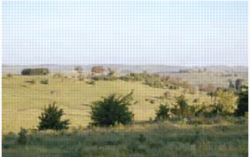
- Conduct a soil test
- Fence your property according to land capability
- Prevent livestock access to erosion prone areas
- Attend a LANDSCANTM course
Land capability is the ability of your farm landscape to sustain a certain type of land use without causing permanent damage. If land is used beyond its capability it will degrade. When assessing land capability, features such as soil depth, stability and fertility, topography, aspect, erosion risk and stream proximity are examined. By looking at these factors and limitations, parcels of land that have the same capability can be identified and managed according to capability.
The most important point about land capability is to recognise the differences between different parts of your farm, and manage these accordingly. This will help you to decide which parts of your property will give a positive return on inputs (fertilisers, improved pastures etc.) without compromising long term sustainability.
Maintain more than 80 per cent groundcover

- Match grazing pressure to feed availability and pasture targets
- Use rotational grazing
- Attend a PROGRAZETM course to learn how to manage pastures and grazing animals
Groundcover is the layer of grasses and/or other plants or plant litter that protect soil against erosion. Groundcover slows rainfall runoff and helps retain moisture in the soil profile for pasture growth and productivity.
Groundcover also protects soil from the impact of rain and filters nutrients, sediment and pathogens before they reach waterways. Groundcover of 80 to 100 per cent, predominantly made up of perennial species, is ideal.
Increase perennial plants in permanent pastures
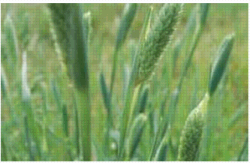
- Learn to identify your pasture species and manage them accordingly – attend a Paddock Plants field day
- Change from continuous grazing to an appropriate form of rotational grazing
- Use strategic combinations of grazing management, fertilisers and herbicides
Perennial pastures are deep-rooted and live for several years.
Perennial pastures offer higher pasture yields, superior feed quality in summer and autumn, reduced supplementary feeding and support higher stocking rates than pasture systems dominated by annual species. In addition to production benefits, deep-rooted perennial species provide year-long groundcover and together with trees and shrubs reduce groundwater recharge and associated salinity.
Implement a rotational grazing system

- Subdivide large paddocks into smaller units
- Join mobs or herds into larger groups
- Match grazing and rest periods to the growth patterns of the most desirable species in the paddock
- Attend a PROGRAZETM course to learn about grazing strategies
Under rotational grazing livestock are moved frequently through a number of paddocks. This exposes pastures to a period of grazing followed by a period of rest. The rest period or rotation length is generally influenced by pasture growth rate. The goal is for pasture to recover and reach a given stage of regrowth before the next grazing. Rotational grazing can improve pasture composition, production, use and persistence.
Feed your pastures - not your creeks
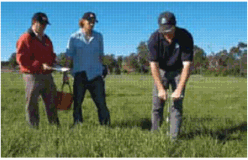
- Conduct soil tests
- Match nutrient applications to pasture types and enterprise needs
- Increase soil organic carbon to encourage healthy soil ecosystems
- Attend a LANDSCANTM course to learn how to sample soils and interpret soil tests
Grazing enterprises export nutrients from the farm in the form of meat, fibre or plant products. Unless these nutrients are replaced (usually in the form of fertilisers) the ability of your soils to maintain healthy levels of groundcover and pasture production will decline over time. Conduct regular soil tests to make informed decisions about the nutrient requirements of your soils and pasture systems. Remember that although nutrients may be beneficial for pasture production, they can also have detrimental effects on water quality. Avoid applying fertilisers too close to streams and drainage lines or in drainage depressions where runoff is likely.
Maintain groundcover in drainage lines and drainage depressions
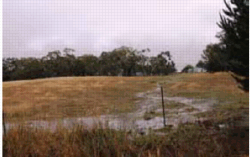
- Keep as much groundcover in drainage lines and drainage depressions as possible
- Fence-off drainage lines and revegetate if possible
Drainage depressions and drainage lines are dips and depressions in the paddock that convey rainfall runoff into waterways during or immediately after periods of heavy rainfall. It is important to keep these areas well covered with as much groundcover as possible to trap sediments, nutrients and pathogens before they enter waterways. Avoid ploughing these areas or applying fertilisers or herbicides when rainfall runoff is expected, for example runoff associated with high intensity summer storms.
Develop a drought management plan

- Develop a drought plan before a drought
- Gradually destock to reduce damage to pastures
- Restrict livestock to containment paddocks or droughtlots
- Attend a PROGRAZETM course or STOCKPLAN® workshop
Droughts deplete both the financial and natural resources of farms. Direct costs include loss of income and increased supplementary feed expenses. Indirect costs include the loss of perennial pastures, groundcover and topsoil. Having a drought plan in place before a drought can help you to manage these costs. Your drought management plan should include trigger points you will use for destocking, measures to protect perennial pastures, and establishment of droughtlots.
Keep juveniles and sick animals away from streams
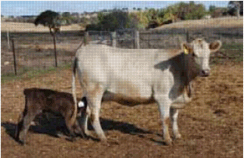
- Fence-off waterways
- Keep at least one paddock between juvenile animals and waterways
- Quarantine sick animals in properly located hospital yards or hospital paddocks
Research has shown that juvenile animals and their lactating mothers can contaminate water with the human infective diseases Cryptosporidium and Giardia. These diseases pose a serious threat to both human and animal health. Sick animals may also shed high levels of these pathogens. The most effective way to prevent water contamination is to keep these animals as far away from drainage lines and streams as practical. Quarantine sick animals in hospital yards until they have recovered.
Establish riparian buffer zones and provide water for stock off-stream
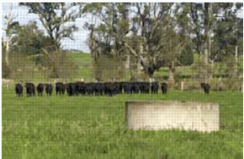
- Fence-off waterways
- Provide off-stream watering points
- Establish or maintain native trees, shrubs and grasses along waterways
Riparian areas are the areas immediately adjacent to creeks, rivers and wetlands. Uncontrolled stock access and grazing degrades riparian areas and reduces water quality. Therefore it is important to keep these areas vegetated or rehabilitated. Well vegetated riparian areas filter sediment, nutrients and pathogens and reduce the amount of contaminants entering waterways. Riparian areas should ideally be made up of native trees and shrubs as well as grasses that are 10 to 15 centimetres tall, with as close to 100 per cent groundcover as possible. Fencing off these areas and providing off-stream water points allows you to control stock access and grazing.
Remember to leave your riparian buffer zones wide enough to allow for weed and pest control.
Locate new infrastructure away from streams, drainage lines and drainage depressions
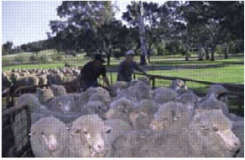
- Locate new farm infrastructure away from streams, drainage lines and drainage depressions
- Install runoff diversion structures or capture effluent before it reaches a waterway
The location of stock yards, laneways, droughtlots, hospital yards, stock watering points and other infrastructure may have a significant impact on water quality. If practical, place new infrastructure as far away from streams, drainage lines and drainage depressions as possible. If you cannot avoid these areas, include structures to divert rainfall runoff away from these areas, or capture and store contaminated runoff from these sites using effluent ponds or sediment basins.
May 2010

